Previously: Tanglin Hill Old Brunei Hostel, Singapore.
In South Korea, near Manguri Memorial Park on the outskirts of Seoul, there’s an old amusement park. It is, to put it in industry terms, standing but not operating, and has been as such for many years. But although the Yongma Land amusement park might be abandoned, it’s far from dead. Indeed, Yongma Land has, perhaps against the odds, come back to life in some surprising ways, despite having been closed for well over a decade.
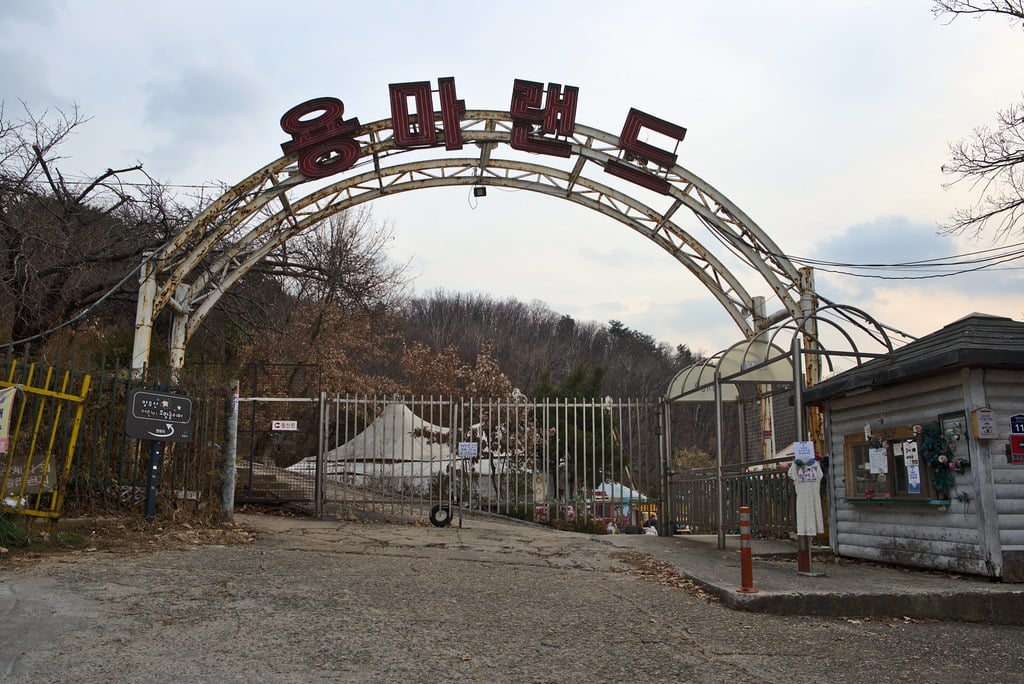
Unlike a lot of the places we’ve examined in our long-running Abandoned feature here at TGIMM, Yongma Land (용마랜드) is actually a place you can visit — legally and relatively safely. It’s become quite an attraction in recent years, largely due to its strange beauty and retro appeal. In fact, it’s often described now as “시간이 멈춘 놀이동산” — in English, “the amusement park where time has stopped.”
[Like what you read? Check out Dangerous Games To Play In The Dark, available from Chronicle Books now!]
But, to paraphrase the Talking Heads, how did we get here? How did Yongma Land go from bustling family amusement park to internationally-known ruin? The story is brief, but worth examining all the same.
Let’s take a look at the life, death, and second life of Yongma Land amusement park, shall we?
A Brief History Of Yongma Land
Yongma Land originally opened in 1983, towards the end of a several-decades-long period of rapid economic growth in South Korea. (Some sources state it opened in 1980, and others 1985; 1983 seems to be the official line, however.) Although small, the park was a hit with families; it was relatively easy to get to, and full of attractions that could capture the attention of small children for a fun, family day out.
The rides were mostly prefabbed carnival rides — nothing necessarily unique or individual to the park, but enjoyable all the same. There was, for instance, a classic Viking ship ride, a small train, a Ferris wheel, an aerial carousel (think the Disney parks’ Dumbo or Aladdin rides), a giant swing, bumper cars, and of course a classic carousel, which remains one of the park’s most notable features today.
By the late 1980s, however, things had started to change — not within Yongma Land itself, necessarily, but rather in both the literal and figurative landscape surrounding it. For one thing, a new competitor had opened nearby, just on the other side of the Han River: Lotte World, one of Seoul’s most notable recreation complexes even now, opened its indoor component, Adventure, on July 12, 1989, with its outdoor component, Magic Island, arriving less than a year later on March 24, 1990. And second, the economy had begun to slow, with what would eventually become the 1997 Asian financial crisis looming.
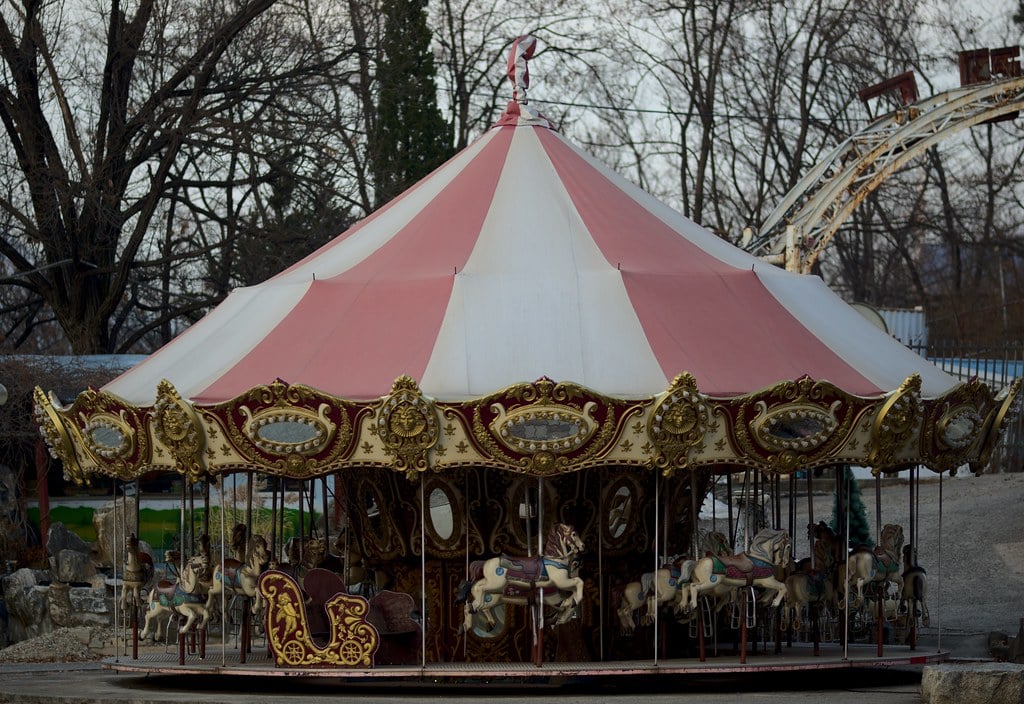
By the mid-1990s, the original owner and operator wanted out; operations were then taken over by Hyun Jun-su around 1995, per an interview with Mr. Hyun published by Ajun News in 2020, who has held onto the reigns ever since.
Hyun originally had big plans to revitalize Yongma Land, with the aim of differentiating it from Lotte World and other nearby competitors like Dreamland, which had opened in 1987. (Like Yongma Land, Dreamland suffered financially in the late ‘90s and early 2000s and closed for good in 2008.) He hoped to add an equestrian and sports facility to Yongma Land’s offerings, but due to a combination of financial difficulties and management issues, the project never came to fruition; construction had stopped by 1999, and the license for the sports facility was canceled.
Still, Yongma Land plugged away until 2011, when the park’s license to operate even as an amusement park was revoked once and for all. The rides shut down. The lights went out. And the gates closed.
The skeleton of the park has sat there ever since — although notably, it doesn’t look like an abandoned park that was shut down in 2011. It looks like an abandoned park from the 1980s. Although Hyun Jun-su told the Korea Times in 2022 that he had made efforts to bring in higher tech attractions — even some boasting early VR capabilities — after he acquired the park, it still looks in many ways to be a perfect time capsule of the era in which it was originally opened. Hence its reputation as “the amusement park where time has stopped.”
And there it remains.
The Haunting Of Yongma Land Park
There are also, of course — as is wont to happen with atmospheric abandoned locations — rumors of a certain… variety that cling to Yongma Land. Rumors that the park didn’t simply close due to financial issues or mismanagement.
Rumors of an accident. Rumors of a death. Rumors of a haunting.
The story usually goes something like this:
There was a girl, once — a girl who, like so many others, came to the park for a day of fun. Instead, though, it became a day of tragedy — one ending with the girl’s death after a fateful ride on a faulty attraction. (Which attraction? No one knows; the story doesn’t say. But then, perhaps that’s for the best.) The park closed its gates for good soon after, although it’s up for debate about whether that closure arose as a result of the accident itself… or as a result of what came after.
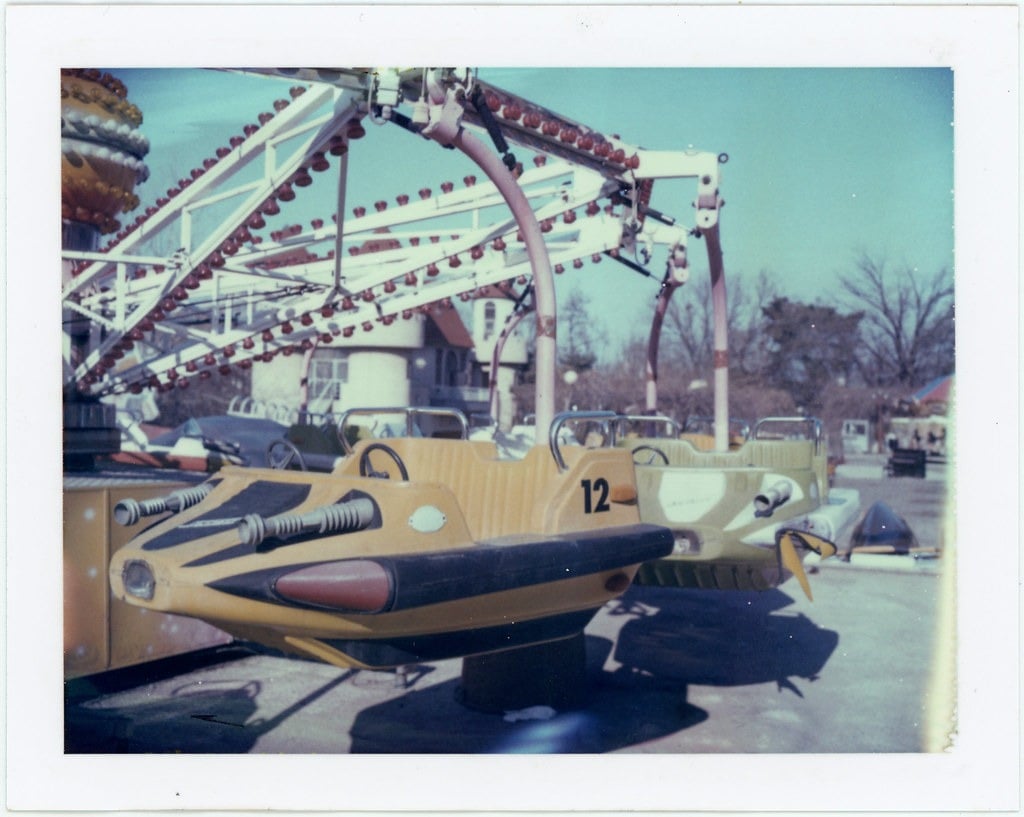
It’s said, you see, that the girl’s spirit still haunts the park. You might hear her voice echoing throughout the deserted landscape, according to some reports; or, if you’re very luck — or unlucky, depending on your point of view — you might see her. You’ll have to look closely, of course; she is a ghost, after all. But those who have spotted her say she likes to play between the hulking shells of the remaining rides. She doesn’t mind that they’re standing but not operating.
Heck, for her, they actually might still be moving — even if, for the rest of us, they are not.
But is there any truth to the rumors? Alas — or, perhaps, thankfully — there is not. There’s no evidence that anyone ever died at the park, let alone that the 2011 closure resulted from such a death. Context is key, too; given the economic circumstances surrounding Yongma Land’s closure, it’s much, much more likely that it boiled down — as it so often does — to finances.
And still: The story persists. You’ll find Yongma Land a constant inclusion in pieces and listicles purporting to name the most haunted places in South Korea — even if there’s no actual haunting going on within its overgrown walls.
Yongma Land’s Second Life
But although Yongma Land may not have any ghosts, it has developed a rather robust second life — a life-after-death, if you will. In recent years, it’s become a popular shooting location for everything from K-pop music videos and photo spreads to K-dramas.
The music video for Crayon Pop’s 2013 single “Bar Bar Bar” for instance, was filmed at Yongma Land in what’s probably one of the park’s highest profile K-pop appearances; additionally, EXO-K, IU, and even BTS have used the park as shooting location for publicity and marketing photos.
Meanwhile, numerous K-dramas and films have shot scenes or episodes at Yongma Land. Among them are Angel Eyes, a 2014 romance; Room No. 9, a 2018 body swap mystery; Alice, a 2020 sci fi romance; Sisyphus: The Myth, a 2021 sci fi thriller; and The Sound Of Magic, a 2021 musical fantasy. (Sisyphys: The Myth and The Sound Of Magic are both available to stream in the U.S. on Netflix, by the way; I’ve seen a few episodes of The Sound Of Magic — I watched them before I even knew about Yongma Land! — and it’s enjoyable, even if K-dramas aren’t usually my thing.)
If you’ve always dreamed of having your wedding photo shoot at an abandoned amusement park, Yongma Land is officially set up for that now, too. In fact, you can have your own shoot there without getting married; it’s now got its very own photography leg, Yongma Land Studio, which allows you to book three different areas on the property — plus the park itself — for private shoots. Rates are listed on the Yongma Land Studio website, although note that for wedding-related inquiries, there’s a separate website.
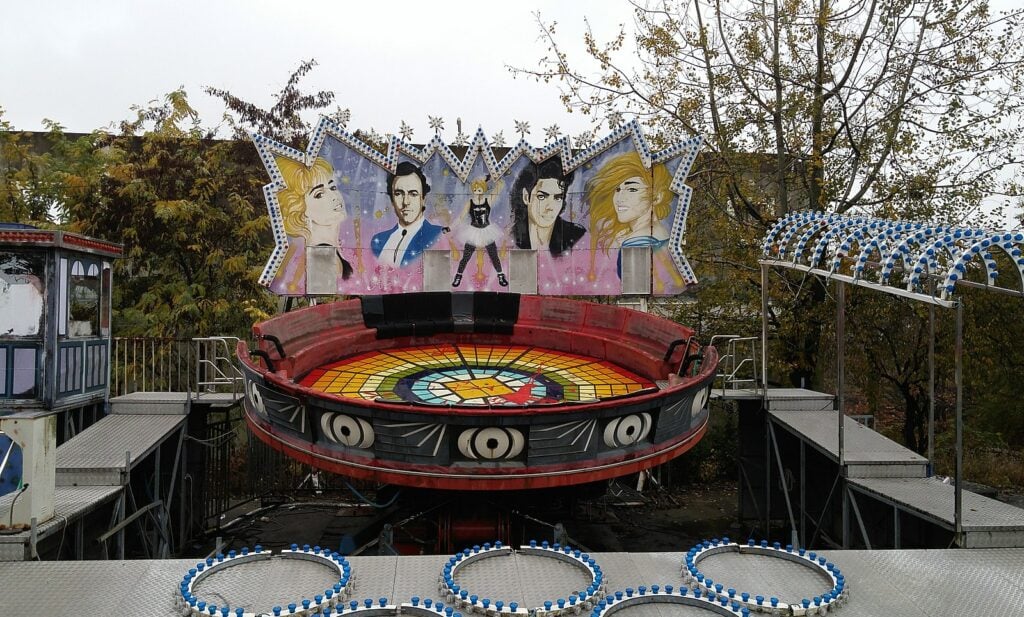
But hey, guess what? You don’t have to be a K-pop idol or have a private event in mind to visit Yongma Land: It accepts visits from the general public daily for a nominal admission fee. For many years, the fee to visit was just 5,000 won — about $3.72 USD, as of this writing — although these days, that’s the price for children; for adults, it’s 10,000 won, or about $7.43 USD. The money is used to keep the park in a state of arrested decay, preserving its current status while also making sure it remains at least somewhat safe to be around.
It’s growing in popularity, as well, largely among foreign tourists. In 2017, the park typically saw 40 to 50 visitors per day, according to Korean news outlet Today’s Newspaper; in the years since, however, awareness of the park has risen dramatically, and as a result, so have the numbers: Hyun Jun-su told the Korea Times in 2022 that there were now “50 to 60 daily visitors during the weekdays and over 100 on weekends, regardless of weather, even if it is cold or rainy.” So, if you go, don’t expect to be the only people there — not unless you choose a particularly odd day or time to go.
Yongma Land is relatively easy to get to, as far as abandoned locations go; you can take the train to Mangu Station, and then walk, take a 15-minute bus ride, or call a cab for the final leg of the journey. After passing through the first gate, you’ll find a ticket booth at the second one; if it’s staffed, you can pay your admission fee (bring cash) right then and there, but if it’s not, there’s a phone number listed at the booth you can call to get someone there.
Note that you’ll probably want to check in with Yongma Land before you go to make sure there isn’t a private booking for the place. Daily information is usually available on the Yongma Land Café board on Naver, but I’d still recommend calling ahead.
If you plan on being there for a while, bring some snacks with you; there are no shops or convenient stores there. (It is a ruin, after all.) There is a vending machine, though, and there are restrooms available as well.
If you go, don’t miss the carousel. It’s really something special — with or without a ghost.
[Photos available under CC BY 2.0, CC BY-SA 2.0, and CC BY-SA 4.0 Creative Commons licenses; see individual photos for specific credits.]
***
Follow The Ghost In My Machine on Bluesky @GhostMachine13.bsky.social, Twitter @GhostMachine13, and Facebook @TheGhostInMyMachine. And for more games, don’t forget to check out Dangerous Games To Play In The Dark, available now from Chronicle Books!
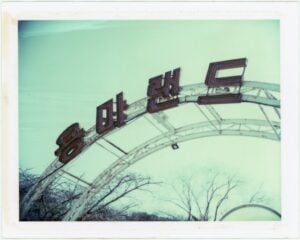


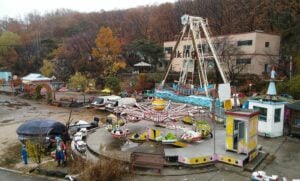





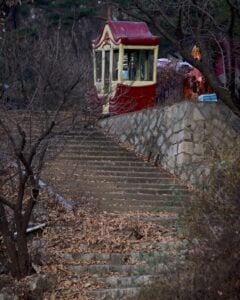

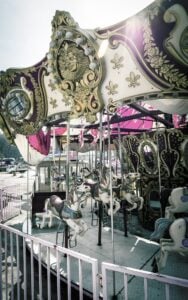
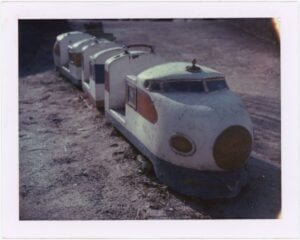
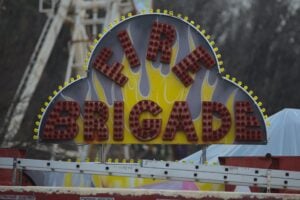
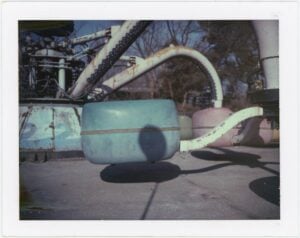

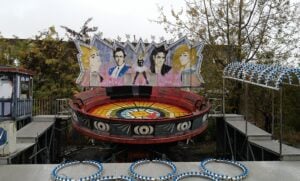

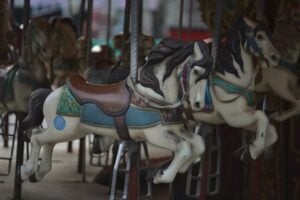

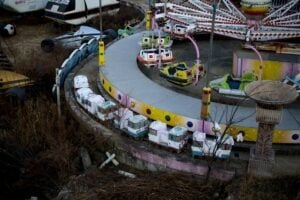

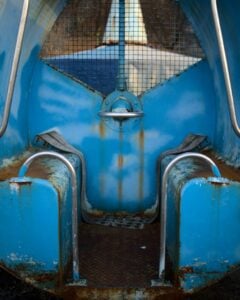


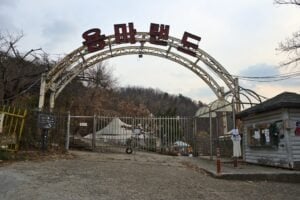
Amazing, I wanna visit there someday but rn I can’t, I’m too far way …
It seems so poetic just the thought to be there, kinda creeps me out but I know it will be worthwhile…